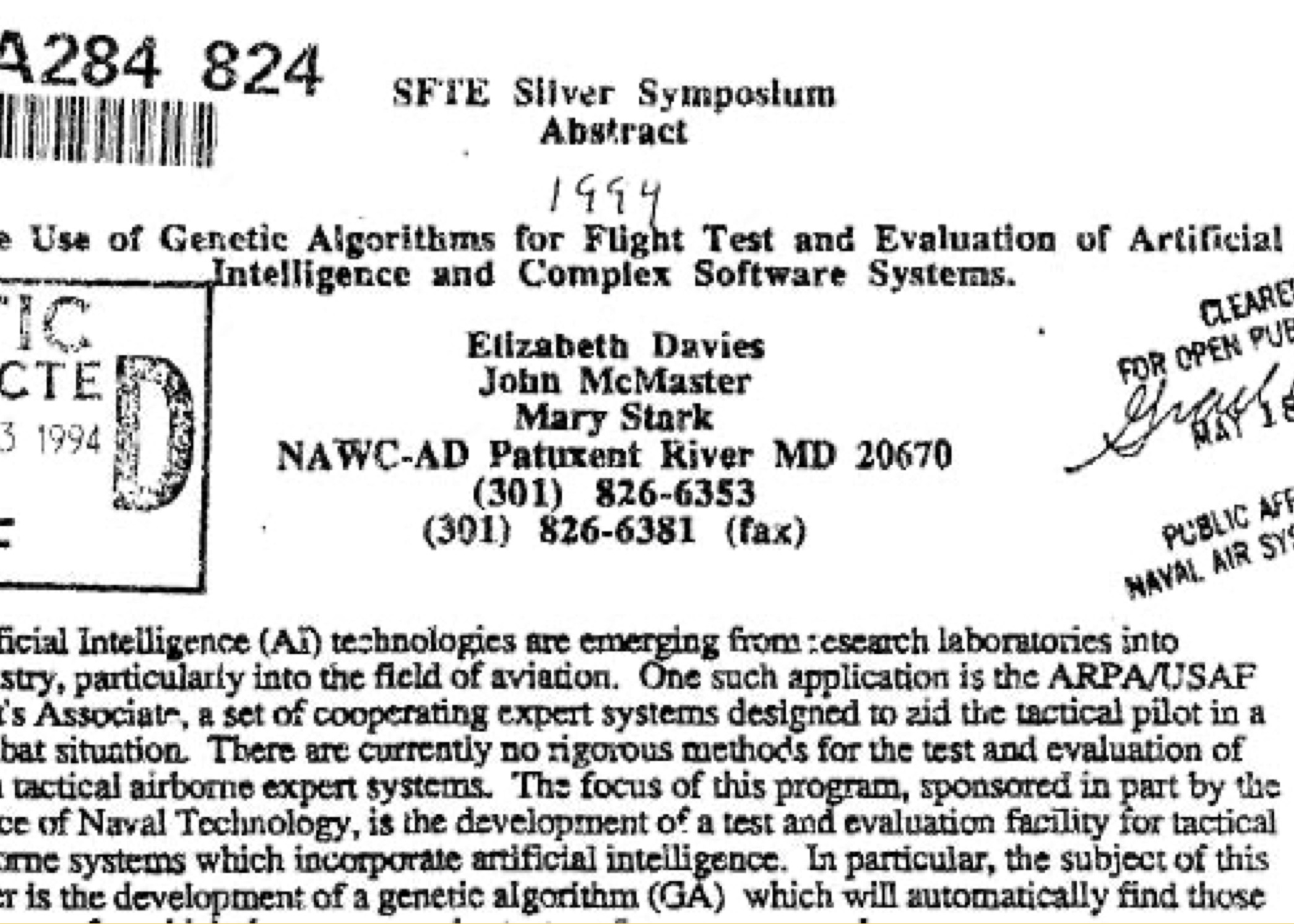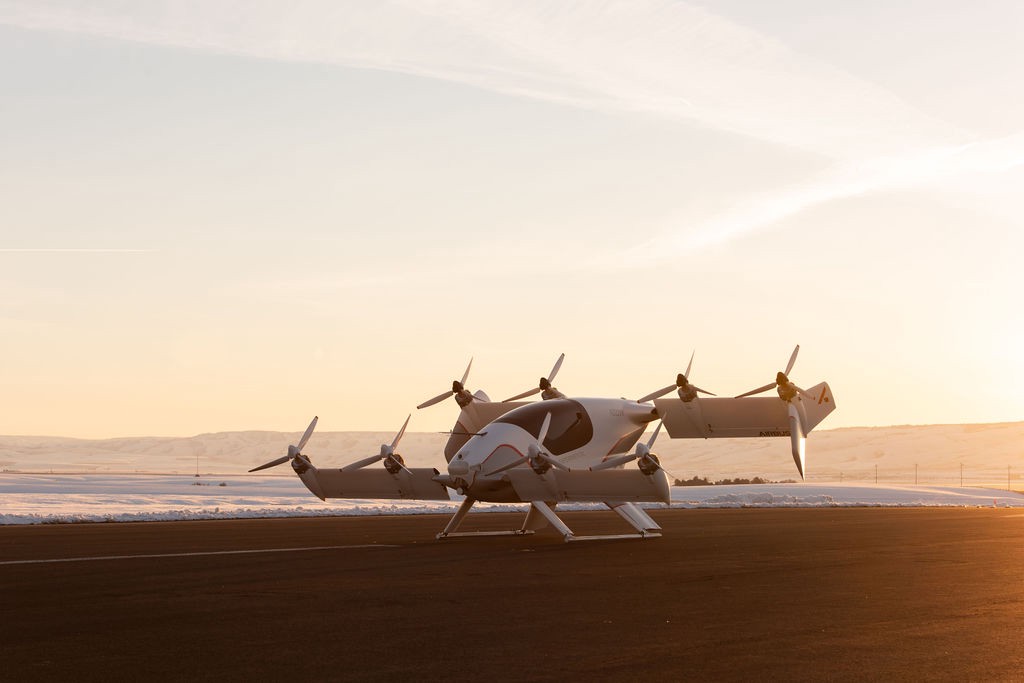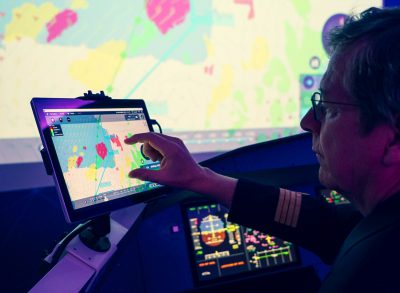
As far back as 1994, Flight Test Safety intersected with Artificial Intelligence (AI). As you can see above, that year the US Navy at Pax River published a paper titled “The Use of Genetic Algorithms for Flight Test and Evaluation of Artificial Intelligence and Complex Software Systems.”
A lot has changed since then. One of the most informative sources (including technical details) of ongoing progress in this field is the Airbus Vahana team. They performed the first flight of the Vahana aircraft on 31 January 2018. In May of 2019, they completed full transition from hover to forward flight. Here are links to a series of articles they’ve published.
Vahana First Flight
May 2019: Full Transition
Flight Test Summary: 2019

This year, SFTE’s Annual Symposium featured two other papers on very closely related topics. At press time, these authors were not available to share these papers herein.
Machine Learning Techniques Applied to Flight Test Data Evaluation, by Kelton Busby and Rebecca Hattery. (Update here.)
Framework for Safe, Effective, and Efficient Testing of Autonomy, by Captains Riley Livermore and Richard Agbeyibor, Emerging Technologies CTF (Combined Test Force), 412th Test Wing, Edwards AFB, CA.
The final two headlines comes from Thales, both of which jumped out at me as I prepared this limited survey.

Psibernetix is an Ohio-based company that writes software (using AI) to perform V&V (Verification and Validation) on AI software. Thales recently acquired them as described here.
Thales has developed a FMS from scratch that incorporates AI.
Thales Reveals Next Generation FMS
Now on Air – Introducing Pureflyt
One thought on “Artificial Intelligence in Flight Test: A Limited Survey”
Comments are closed.